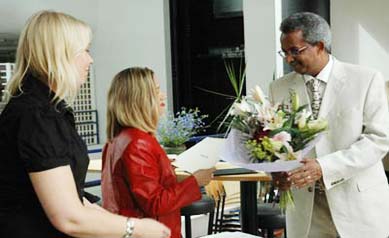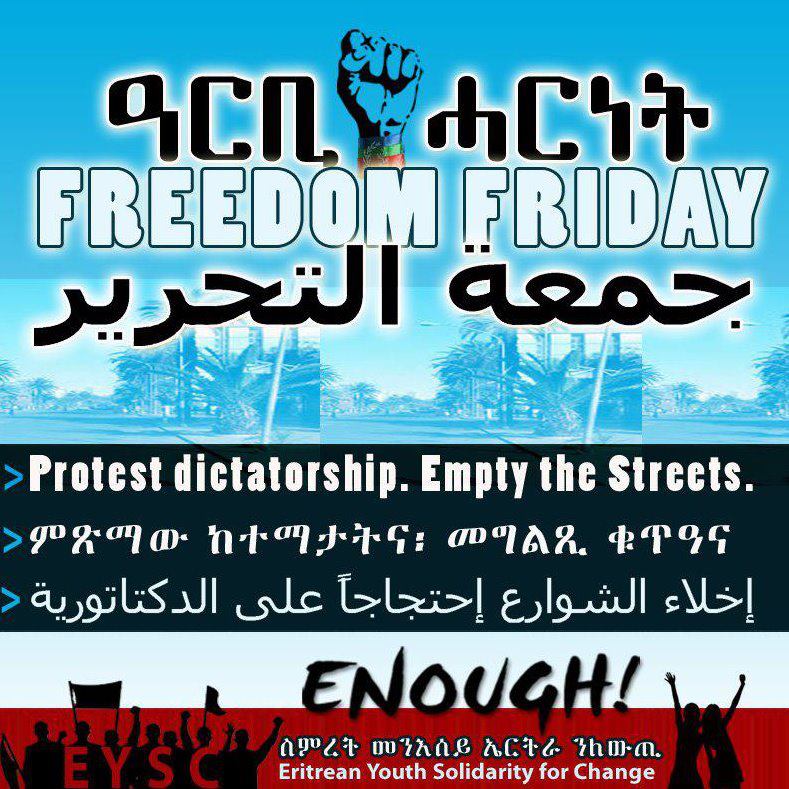Meet Mahmoud Jaber Debrom
Mr. Mahmoud Debrom is an artist who has depicting powerful images of traditional Eritrea. He is comfortable working with oil paints, water colors, pastel and pencil sketches across various styles including Abstract (Cubsism, Realism, Surrealism.) Awate.com has presented a few of his pieces depicting Eritrean culture; we will share his vast collection in installments. Anyone interested in investing on the images is encouraged to contact the artist at: ghinda2@hotmail.com. To introduce you to the artist, Saleh (Gadi) Johar conducted a phone interview which is presented below:
ART IS A GIFT FROM GOD
“A child, some times, can be born in a twinkling lantern light, in a dark night, on a clay platform bed or on wooden bed of woven surface with goat skin stripes covered with a piece of plaited mat sheet, in a small village with no electrical lighting system, and can become a gifted artist, while another child born and raised in a country that boasts high artistic culture, could not.”
Debrom told me that he was born in 1938 in Ghinda when the town’s bosom reared many celebrated Tigre singers and poets. How did he develop his drawing skills in Ghinda, a small town whose population could hardly be more than 3000 people? Debrom says, “It was almost impossible to find oil colors, water colors, or pastel colors except lead pencils and charcoal… but as a child I had the ability to draw perfect shapes of faces, human figures, birds and animals.” He said that his elementary school classmates recognized his skills and gave him a nickname: “al rassam, what I come to know later meant the artist.”
When he was seven or eight years old, Mahmoud “started using pencil to draw lines like any child, usually two-dimensional shapes.” But he continued to practice and he learned “how to shade his drawing and give it three dimensions.” That was black pencil drawing and he didn’t have colored pencils. He solved the problem: “When I drew trees, I mashed leaves of plants to give a touch of green color to the landscapes.”
It was not until he was in the fourth grade that he entered into the world of watercolors and pastels which Muna, his classmate, used to bring from her American friends, Mr Duff’s daughters. “Muna’s house was in a cornfield adjacent to the residence of Mr. Duff of the Evangelical mission.” Muna is now deceased, “May Allah bless her soul.”
Mahmoud moved to Asmara when his mother died, his father had died earlier. He was thirteen when he “entered the Islamic Benevolent School (Islamia) in Asmara and saw advanced oil paintings by Italian artists displayed at gift shops.” He could not afford to buy oil or water colors to satisfy his hobby and produce paintings as good as the ones he saw.
In 1957, Debrom left for Saudi Arabia to join his brother and began attending night classes to learn English. He was seventeen. “Between 1957-1976 I didn’t pursue my painting hobby; instead I concentrated in reading books to improve myself and get a managerial or a supervisory job instead of the clerical jobs that I had.” His talent lay dormant as he pursued clerical jobs for nearly twenty years.
He returned to drawing in 1977 while working for Lockheed Aircraft Company, “An American lady who worked with me saw me drawing on a piece of paper and said, ‘you can draw this well and you are sitting for eight hours everyday on an office chair?” She reminded Mahmoud that he was an artist and Mahmoud decided to re-activate his hobby, “I went immediately to an art supply store and purchased all my needs, art materials, and started painting.”
Soon, Mahmoud joined “the Jeddah Fine Arts Society (JFAS) which was formed by American, French, Italian, British and Arab expatriate artists working in Jeddah and took part in the most exhibitions held by the group and began to read specialized quarterly art magazines such as ‘The American Artist’ and the British magazine ‘The Artist’ and began studying different styles and techniques.”
I asked Mahmoud again if he had any formal training. He said, “I never received any art instruction by any art teacher, I taught myself.” Did he visit museums? “In my various travels I visited museums and art galleries in Italy, Germany, Egypt and U.S.A.; that exposed me to the work of the contemporary painters and the great art masters in history.”
Mahmoud took part in “at least 21 collective art exhibitions and sole exhibition in Jeddah and won a prize in the Saudia Airlines 1st Art Competition in 1993.” In 1994, his pieces were published in Saudia Calendars, “selected among the best 12 paintings from 350 works submitted by 240 artist competitors of different nationalities.”
Over one hundred of Mahmoud’s paintings are in the collection of the famous Museum of Abdul-Rauf Khalil in Jeddah, Saudi Arabia. “Reproductions of several of my paintings about Eritrean culture have been spread in Eritrea, Middle East, Europe & USA since 1980s.”
I ask about his preferred style?
“All. I paint in different styles such as surrealism and cubism. I am drawn to old buildings and a lot of cultural images.”
I continue: are artists “more human” than the rest?
“I don’t know, I can only speak for myself. People mean a lot to me, regardless of their race, color or belief; that is the most beautiful combination in our planet, exactly like an artwork, if it is not composed with touches of different colors, it doesn’t give any sense of beauty. You and I and all the other people are the most beautiful element on our globe.”
I note that that was poetic, and I ask him if considers himself a poet.
“Art is not only color on canvas, poem on paper, drama at theatre, books on shelves or songs and musical instruments at the stage. They are a mixture of feelings and emotions planted inside the artist and inside everyone of us as human beings.”
For somebody who left Eritrea decades ago, his depiction of Eritreans is phenomenal: impressive in its detail. How cou
“Yes, very long years and very long miles, faraway from my beloved homeland… the innocent faces of my own people; I find great pleasure and enjoyment when I depict their daily lives on my paintings. The culture and faces the Eritrean people is engraved as a holy memory in my heart. They are the pearls of my paintings.”
Please respect the artist and his creation by respecting his copyright. If you would like to drop him words of encouragement or acquire his work, please contact him directly at: ghinda2@hotmail.com



Awate Forum